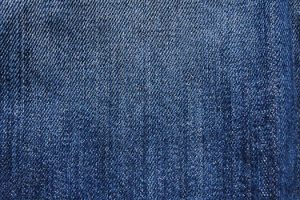The Carbon-Negative Wardrobe: Fashion’s Climate Solution
Fashion has always been a powerful tool for self-expression, individuality, and art. However, in recent years, the fashion industry has also been under scrutiny for its detrimental impact on the environment. From textile production to garment shipping, the fashion industry is responsible for a significant amount of greenhouse gas emissions and water pollution. But amidst all of this, there is a promising solution emerging – the carbon-negative wardrobe. This new concept aims to tackle fashion’s climate impact through innovative and sustainable practices. Let’s explore how the carbon-negative wardrobe could be fashion’s climate solution.
What is the Carbon-Negative Wardrobe?
The carbon-negative wardrobe is a concept that has risen to prominence in the quest for a more sustainable and eco-friendly fashion industry. It refers to a wardrobe that has a net negative carbon footprint, meaning it removes more carbon from the atmosphere than it emits. This is achieved through a combination of carbon offsetting and sustainable fashion practices, such as sourcing materials from regenerative or recycled sources.
The Role of Carbon Offsetting
Carbon offsetting is the process of reducing one’s carbon footprint through the investment in projects that counteract carbon emissions. In the context of the fashion industry, carbon offsetting involves supporting sustainable forestry, clean energy, or other projects that reduce the industry’s carbon impact.
A carbon-negative wardrobe would ideally offset more carbon than it emits, making it a sustainable and environmentally-friendly option for fashion lovers. By supporting carbon offset projects, fashion brands can reduce their environmental impact and contribute to a greener future.
Sustainable Fashion Practices
In addition to carbon offsetting, the carbon-negative wardrobe also utilizes sustainable fashion practices. This means using environmentally-friendly materials in the production of clothing, such as organic or recycled fabrics. Sustainable fashion also involves ethical and fair labor practices, promoting transparency and accountability in the supply chain.
Moreover, the carbon-negative wardrobe focuses on reducing waste and promoting circular fashion. This includes recycling or upcycling old clothing, designing durable and long-lasting pieces, and encouraging a shift towards a sharing or rental economy.
The Benefits of a Carbon-Negative Wardrobe
The carbon-negative wardrobe brings several benefits to the fashion industry and the planet as a whole. Here are some of the key advantages of this sustainable fashion concept:
Reduced Carbon Footprint
By implementing carbon-offsetting and sustainable fashion practices, the carbon-negative wardrobe significantly reduces the fashion industry’s carbon footprint. This helps combat climate change and reduces the industry’s contribution to global warming.
Promotes a Circular Economy
The concept of the carbon-negative wardrobe promotes circular fashion, which aims to reduce waste and promote sustainability. By design, the carbon-negative wardrobe encourages sustainable fashion practices such as recycling and upcycling, ultimately creating a more circular economy within the industry.
Increased Transparency and Accountability
In a world where consumers are increasingly conscious of their environmental impact, the carbon-negative wardrobe offers a solution that promotes transparency and accountability. With a focus on sustainable fashion practices and ethical supply chains, brands can build trust with their customers and gain a competitive edge in the market.
The Future of Fashion is Carbon-Negative
The fashion industry has a significant impact on the environment, but it also has the potential to be a powerful force for change. The concept of the carbon-negative wardrobe proves that sustainable and eco-friendly fashion is not only possible but also necessary in the fight against climate change.
As consumers, we can also play a crucial role in promoting a carbon-negative fashion industry. By supporting brands that prioritize sustainability and choosing clothing made from environmentally-friendly materials, we can help drive the industry towards a more sustainable future.
In conclusion, the carbon-negative wardrobe offers a promising solution to fashion’s climate impact. Through a combination of carbon-offsetting and sustainable fashion practices, this concept has the potential to transform the industry and pave the way for a more environmentally-friendly fashion future. So, let’s make a choice to support carbon-negative fashion and be a part of the solution towards a greener planet.









